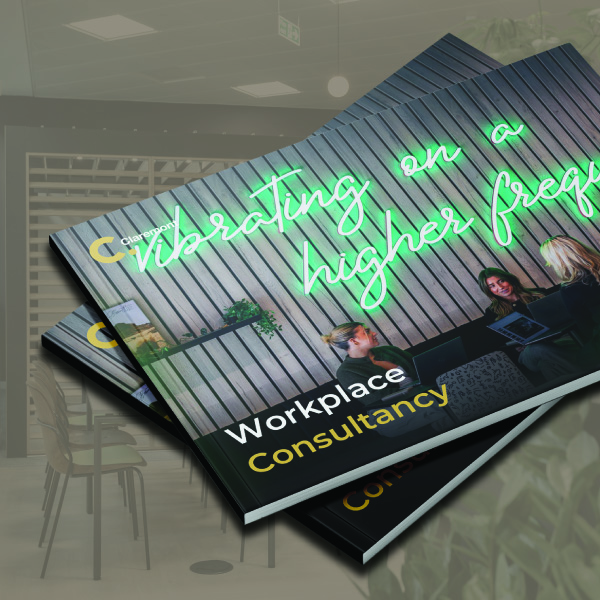
Hybrid working - one size does not fit all
Date
27 November 2023
Read length
3 min
Hybrid working has become a catch-all term, but it’s not a singular concept, and one size does not fit all.
Even after several years of hybrid working being a mainstream concept – many organisations are still trying to get the right balance of in-office and remote working and, in some cases, to accept that a whole business won’t necessarily work in the same way.
Consequently, business leaders need to familiarise themselves with the breadth of available hybrid work styles and determine what works for the business and their people. In doing so, they become better equipped to create compelling Destination Offices and approach office interior design and office refurbishment projects with peace of mind and confidence.
What are the Hybrid Working Models?
Organisations are unique, with complex and diverse needs, structures, cultures, and individuals. That’s why an organisation is likely to adopt variations of hybrid working rather than one permanent model.
To help drill into the details of hybrid working and identify which model resonates best for a business, we’ve identified four major hybrid work models, drawing on data and observations of companies and employee behaviours gathered during our workplace consultancy activities.
The four hybrid working models are:
- Remote First. This model assumes that the remote working model is the default for employees, regardless of their tasks. It emphasises providing office space for employees to use as needed, but the decision is up to the individual. Trust and empowerment are crucial for the success of this model.
- Office First. This model is characterised by the office as the default working location for employees, allowing them autonomy to choose remote work when suitable. The office-first model emphasises the office as the default environment, influencing daily habits and decision-making. As a result, the office is consistently occupied, fostering a sense of connection and collaboration.
- Split Week. This model focuses on scheduling rather than location. Employees have designated days or a specific number of days to work from the office. This model provides structure and flexibility, allowing employees to plan their activities and personal commitments accordingly. It helps manage office density and ensures consistent occupancy throughout the week.
- Designated Teams Model – This model assigns specific working locations to teams or job roles based on their requirements and business needs. For example, customer service teams may work from a central office for consistent messaging and easy access to managerial guidance. While it may not seem like a hybrid model on an individual level, it takes a micro-hybrid approach on an organisational level. This model provides routine, structure, and a sense of belonging.
The use of technology and specific job requirements may also influence the selection of hybrid models. For example, contact centre teams may benefit from the designated teams model, as they require a full-time office presence. Departments undertaking focused work may adopt a remote-first approach, while an HR team may choose the office-first model to maintain visibility.
How can the Destination Office respond to hybrid working models?
When employers know which specific hybrid models they’re using, they can start to make more considered real estate and people-led decisions. For example, some office space could be sublet if many departments use the remote first model. For those using the split-week model, it might make sense to switch parts of the office on or off in line with demand. This can help reduce energy costs and protect culture, as it stops employees from being spread out too thinly on low occupancy days.
But, while each hybrid working model has its distinct characteristics and requirements, there are some universal requirements of a hybrid working-enabled Destination Office. Here are four fundamental ways the Destination Office must cater for hybrid working:
- Communications and culture – Employees need clarity about what hybrid working means to their organisation, department and role and what is expected. This should be supported by clear communication and a culture of empowerment.
- Choice and variety – Successful hybrid working requires choice-rich workspaces where people can select their preferred setting based on their needs that hour or day – those needs might be task-based (i.e. a quiet area for concentration) or more personal (i.e. access to wellbeing or relaxation spaces.)
- Friction-less experiences – When employees work in different and more flexible ways, the workplace needs to offer easy and intuitive experiences. This means making it easy to access shared resources, use printers and book facilities.
- Flexibility – Successful hybrid working delivers flexibility for organisations and employees. Organisations need the Destination Office to flex and adapt with them. This can be achieved with movable furniture to allow spaces to be reconfigured easily, predicting and accommodating changing occupancy levels and controlling the flow of people and use of facilities.
To find out more about the research behind the four different hybrid working models and the trends shaping the future of the workplace and office interior design, download a copy of Claremont’s latest Insight Report here.
See how we could help with your new office interior design or office design and build project here
Get in touch
We love nothing better than talking all things workplace and design – got a question, potential project or just need some guidance?
Drop us a note…




